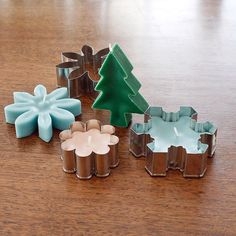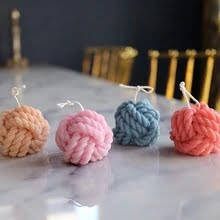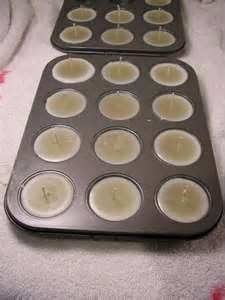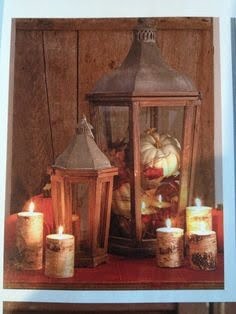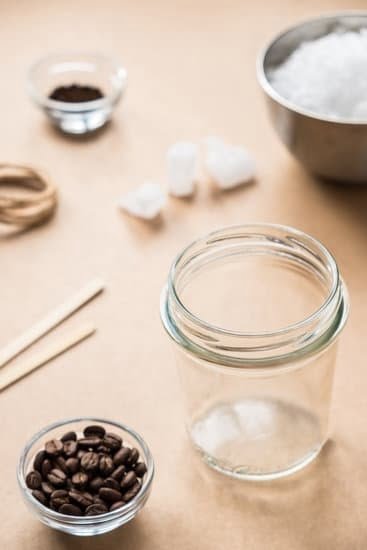Are you interested in getting started with candle and soap making as a hobby or a business venture? Look no further than wholesale candle and soap making supplies to kickstart your journey into the world of handmade products. Whether you are a seasoned crafter or a beginner looking to explore this creative realm, having access to high-quality materials at affordable prices can make all the difference in bringing your ideas to life.
Candle making is an art that requires a good understanding of the process and the necessary supplies involved. From choosing the right wax to selecting fragrances that complement each other, every step plays a crucial role in creating beautiful and aromatic candles. This article will guide you through the basics of candle making, providing insights into different types of waxes, essential oils, packaging options, tools, equipment, and safety precautions to ensure a smooth and successful crafting experience.
To start on the right foot, it is essential to familiarize yourself with the variety of waxes available for candle making – soy, paraffin, beeswax, and more. Each type has its unique characteristics that can affect the appearance and performance of your candles. Additionally, selecting suitable scents from essential oils and fragrances is key to enhancing the ambiance of your creations.
Stay tuned for expert tips on packaging and branding strategies to make your products stand out in a competitive market. With wholesale suppliers at your disposal, sourcing top-notch materials becomes hassle-free as you embark on your journey towards creating handcrafted masterpieces.
Types of Waxes for Candle Making
When it comes to candle making, choosing the right wax is crucial for the quality and performance of your final product. One of the most popular waxes used in candle making is soy wax. Soy wax is derived from soybean oil, making it a natural and eco-friendly option.
It burns cleanly with minimal soot, has a longer burn time, and holds fragrance well. Additionally, soy wax is easy to work with and can be easily cleaned with soap and water.
Another commonly used wax is paraffin wax. Paraffin wax is a byproduct of petroleum refining and is known for its excellent scent throw. It has a smooth and creamy texture that allows for vibrant color dyes to be added effectively.
However, some users may find that paraffin wax produces more soot compared to other waxes. Beeswax is another popular choice among candle makers due to its natural origins and sweet honey-like aroma when burned. Beeswax burns longer than many other waxes and emits negative ions that can help purify the air.
For those looking for alternative options, palm wax, coconut wax, and bayberry wax are also available in the market for candle making purposes. Palm wax has a unique crystalline appearance when cooled, making it suitable for decorative candles. Coconut wax is made from the meat of coconuts, giving it a slow burn time and good scent throw. Bayberry wax has a distinctive pine-like scent and was traditionally used in early American candle-making practices.
| Wax Type | Main Features |
|---|---|
| Soy Wax | Natural, clean-burning, excellent fragrance retention |
| Paraffin Wax | Great scent throw, smooth texture but may produce more soot |
| Beeswax | Natural origin, long burn time, emits air-purifying negative ions |
Essential Oils and Fragrances
When selecting the right scents for your candles and soaps, it is essential to consider the target audience and the desired purpose of your products. For example, lavender essential oil is known for its calming properties and is popular in products meant for relaxation. Peppermint essential oil provides a refreshing aroma that is often used in personal care items like soaps. Meanwhile, fruity fragrance oils like strawberry or citrus can add a sweet and zesty touch to candles.
It is also important to keep in mind the compatibility of scents with the materials being used in your candle and soap making process. Some fragrances may not perform well with certain types of wax or soap bases, affecting the overall quality of your final products. Conducting small test batches before full production can help ensure that the chosen scents blend well with all ingredients involved.
| Essential Oils | Fragrance Oils |
|---|---|
| Lavender | Strawberry |
| Peppermint | Citrus |
Packaging and Branding
When it comes to selling handmade candles and soaps, packaging and branding play a crucial role in attracting customers and setting your products apart from the competition. The way you present your creations can significantly impact the overall perception of your brand. From choosing the right packaging materials to creating a visually appealing label design, every detail matters.
Choosing the Right Packaging Materials
The first step in creating an appealing product presentation for your handmade candles and soaps is selecting the right packaging materials. Consider factors such as durability, aesthetic appeal, and eco-friendliness when choosing packaging options. Whether you opt for glass jars, tin containers, or biodegradable wraps, make sure that the material complements the product inside and aligns with your brand values.
Designing Eye-Catching Labels
In addition to choosing high-quality packaging materials, designing eye-catching labels is essential for effective branding. Your label should not only include important product information such as ingredients and usage instructions but also reflect the unique identity of your brand. Consider working with a graphic designer to create a custom label design that captures the essence of your candles and soaps.
Creative Branding Strategies
Beyond just packaging and labels, creative branding strategies can help differentiate your products in a competitive market. Consider incorporating unique elements such as personalized thank you notes, branded tissue paper, or samples of other products from your line to surprise and delight customers. Consistent branding across all touchpoints – from social media posts to packaging inserts – can help build brand recognition and loyalty among consumers.
By paying attention to every aspect of product presentation – from choosing the right packaging materials to designing captivating labels and implementing creative branding strategies – you can elevate the appeal of your handmade candles and soaps. Remember that investing time and effort into packaging and branding not only enhances the overall customer experience but also reinforces the value of your products in the minds of consumers.
Tools and Equipment
When embarking on the journey of candle and soap making, having the right tools and equipment is essential to ensure a smooth and successful process. Here is a comprehensive list of must-have tools that every artisan should have in their crafting arsenal:
- Double Boiler or Wax Melter: A double boiler is crucial for melting wax safely and evenly without overheating. Alternatively, a dedicated wax melter can also be used for larger batches.
- Thermometer: A thermometer is necessary to monitor the temperature of the melted wax or soap base to ensure it reaches the correct consistency for pouring.
- Measuring Cups and Spoons: Accurate measurements are key in candle and soap making, so having a set of measuring cups and spoons specifically designated for this purpose is important.
In addition to these basic tools, there are other essential equipment items that are necessary for candle and soap making:
- Heat-Resistant Containers: Mason jars or aluminum pouring pitchers are ideal for holding melted wax or soap before pouring into molds.
- Molds: For shaping candles or soaps, various molds such as silicone mold trays or metal molds are needed depending on the desired final product.
- Stirring Utensils: Wooden sticks or stainless steel spoons are commonly used for mixing dyes, fragrances, and additives into the wax or soap mixture.
With these tools and equipment at hand, artisan crafters can effectively create beautiful candles and soaps with ease. Remember that investing in high-quality tools will not only make the process more enjoyable but also result in professional-looking products that customers will love. And don’t forget to source your tools from reliable wholesale suppliers to get the best value for your money.
Safety Precautions
When it comes to candle and soap making, safety should always be a top priority. Working with hot wax and lye can pose potential risks if proper precautions are not taken. Here are some essential tips for handling these materials safely:
- Always wear protective gear such as gloves, goggles, and an apron when working with hot wax and lye to prevent any accidents or injuries.
- Make sure to work in a well-ventilated area to avoid inhaling any fumes that may be emitted during the candle and soap-making process.
- Keep a fire extinguisher nearby in case of any unexpected fires that may occur while melting wax or using lye.
Additionally, it is essential to follow specific guidelines for handling hot wax and lye to ensure your safety and the quality of your candles and soaps:
- When melting wax, do so in a double boiler or a dedicated wax melter at the recommended temperature to prevent accidental burns or fires.
- Exercise caution when working with lye by wearing protective equipment and following precise measurements to avoid skin irritation or chemical burns.
- If you accidentally spill hot wax or lye on yourself, immediately rinse the affected area with cool water and seek medical attention if necessary.
By taking these safety precautions seriously and being mindful of the potential risks associated with working with hot wax and lye, you can create beautiful candles and soaps without compromising your well-being. Remember that safety should always come first in any DIY project involving wholesale candle and soap making supplies.
Wholesale Suppliers
When starting a candle and soap making business, finding reliable wholesale suppliers for your supplies is crucial to ensure quality products at competitive prices. There are several factors to consider when choosing wholesale suppliers for your candle and soap making needs.
Research and Vet Suppliers
Before committing to a wholesale supplier, take the time to thoroughly research potential companies. Look for reviews from other customers, check if they have certifications for their products, and inquire about their manufacturing processes. It is essential to vet suppliers to ensure they meet your standards for quality and reliability.
Product Quality and Selection
When selecting a wholesale supplier for your candle and soap making supplies, pay close attention to the quality of their products. Ensure that they offer a wide range of waxes, essential oils, fragrances, packaging materials, and tools that meet your specific needs. A reputable supplier should provide high-quality materials that will result in superior finished products.
Pricing and Discounts
Another important factor to consider when choosing a wholesale supplier is pricing. Compare prices among different suppliers to ensure you are getting the best deal possible without sacrificing quality. Look for suppliers that offer discounts for bulk purchases or frequent buyers. Additionally, inquire about shipping costs and delivery times to factor these into your overall expenses.
By following these guidelines and conducting thorough research, you can find reliable wholesale suppliers for your candle and soap making supplies. Building strong relationships with trustworthy suppliers is key to the success of your handmade business, as it ensures consistent quality in your products while keeping costs down. Invest time in finding the right partners who share your commitment to creating excellent candles and soaps for your customers.
Success Stories
Starting a small business in the candle and soap making industry can be a fulfilling and rewarding venture. Many successful entrepreneurs have kickstarted their journey by sourcing their supplies from wholesale candle and soap making suppliers. These suppliers offer a wide range of products at competitive prices, allowing small businesses to create high-quality products while keeping costs low.
One inspiring success story is that of a local artisan who began creating candles and soaps in her kitchen using wholesale supplies. Through hard work and dedication, she was able to grow her business and expand her product line to include other handmade bath and body products. By starting with wholesale candle and soap making supplies, she was able to invest more in marketing and branding, which helped her attract a loyal customer base.
Another success story comes from a couple who turned their passion for crafting into a thriving online store selling handmade candles and soaps. They diligently researched various wholesale suppliers before finding one that offered top-notch quality supplies at affordable prices.
With dedication and creativity, they were able to differentiate their products in the market and build a reputable brand known for its unique scents and aesthetic packaging. This just goes to show that with the right resources, support, and determination, anyone can turn their hobby into a successful business in the candle and soap making industry.
Frequently Asked Questions
How Many Candles Does 1lb of Wax Make?
One pound of wax can typically make around 4 to 5 standard-sized candles, depending on the size of the candles being made and the specific type of wax being used. It’s important to consider the size and complexity of your candles when determining how many will be produced from a pound of wax.
Is Candle-Making Profitable?
Candle-making can be profitable if done right. The key factors that contribute to profitability include pricing, quality of materials used, marketing strategies, and overall demand for your candles. It’s important to carefully calculate costs and set competitive prices while maintaining consistent quality.
How Many Candles Should I Make to Start a Business?
When starting a candle-making business, it is advisable to start small and gradually increase production as demand grows. Initially making a batch of 50 to 100 candles can be a good start to test the market and refine your craft.
As you gain more experience and traction in the market, you can scale up production accordingly while keeping track of consumer preferences and trends in the industry.

Welcome to my candle making blog! In this blog, I will be sharing my tips and tricks for making candles. I will also be sharing some of my favorite recipes.

